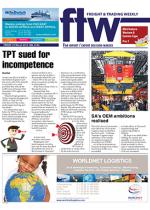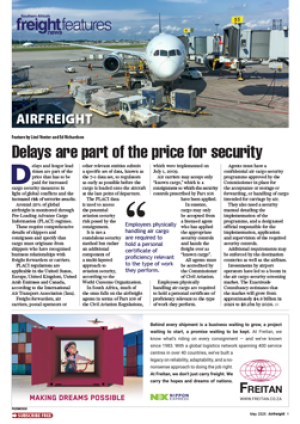The failure by the
Airports Company of
South Africa (Acsa) to
invest in the runway
at the Port Elizabeth airport
has created an opportunity
for the Coega Development
Corporation (CDC) to build
a new airport in the Coega
Industrial Development Zone
(IDZ).
The CDC has issued a
notice for an Environmental
Impact Assessment (EIA)
study to assess the feasibility
of establishing a cargo airport
and an aeronautical/ aerospace
industrial cluster in the Coega
Industrial Development Zone
(IDZ).
Work on extending the Port
Elizabeth runway to handle
wide-bodied aircraft has been
stalled for more than 15 years
by Acsa, despite the fact that
it has been given the land it
needs by the Port Elizabeth
municipality.
“We are happy that the
project is beginning to take
shape. Feasibility work has
been done by industry experts
which has yielded great
potential for the project. The
establishment of an advanced
manufacturing cluster for
aeronautical and aerospace
industries has always been
on our vision map,” says
Mogamad Sadick Davids,
CDC metallurgy business
development manager.
Research undertaken for
the CDC identified that the
clear and largely empty blue
skies over the Eastern Cape
represented valuable real
estate that had the potential to
help the province’s aerospace
industry to really take off.
In addition, the proposed
airport will be able to take
wide-bodied freighters,
enabling manufacturers based
in the Port Elizabeth area to
export and import directly by
air.
At present international
airfreight travels mostly by
road to OR Tambo.
According to Davids,
opportunities have been
identified for the assembly
and manufacture of a range of
aircraft and components.
There is a relatively strong
aeronautical sector in the
province, which is already
home to at least two aircraft
assemblers – the Mooney in
Port Alfred and the RV series
by the Aircraft Assembly and
Upholstery Centre in Port
Elizabeth.
A third facility has been on
the cards for Somerset East
for some time, but has failed
to raise sufficient funds for the
assembly of two types of light
aircraft.
There are also more than
nine flying schools in the
province.
Possible aeronautical and
aerospace opportunities being
investigated
by the CDC
include the manufacturing of
helicopters, aerospace engines,
auxiliary equipment and parts.
The airport could also serve
as a base for the assembly and
testing of prototypes in the
largely uncluttered Eastern
Cape skies.
One of the strategic
advantages that the motor
industry brings to the province
is the support infrastructure
that sustains it.
It is only thanks to the
motor industry that the
province has the
skills to service
robots, to
design
production lines, to make or
maintain tools, or to program
CNC machines.
Most importantly, perhaps,
the province has the logistics
chains in place which source
components from around the
world and deliver them just
in time or just in sequence
to the production line – and
then to export the fully built
up vehicles or value-added
components.
New Eastern Cape freight airport mooted
27 Mar 2015 - by Ed Richardson
0 Comments
FTW - 27 Mar 15

27 Mar 2015
27 Mar 2015
27 Mar 2015
27 Mar 2015
27 Mar 2015
27 Mar 2015
27 Mar 2015
27 Mar 2015
27 Mar 2015
27 Mar 2015
Border Beat
Featured Jobs
New
